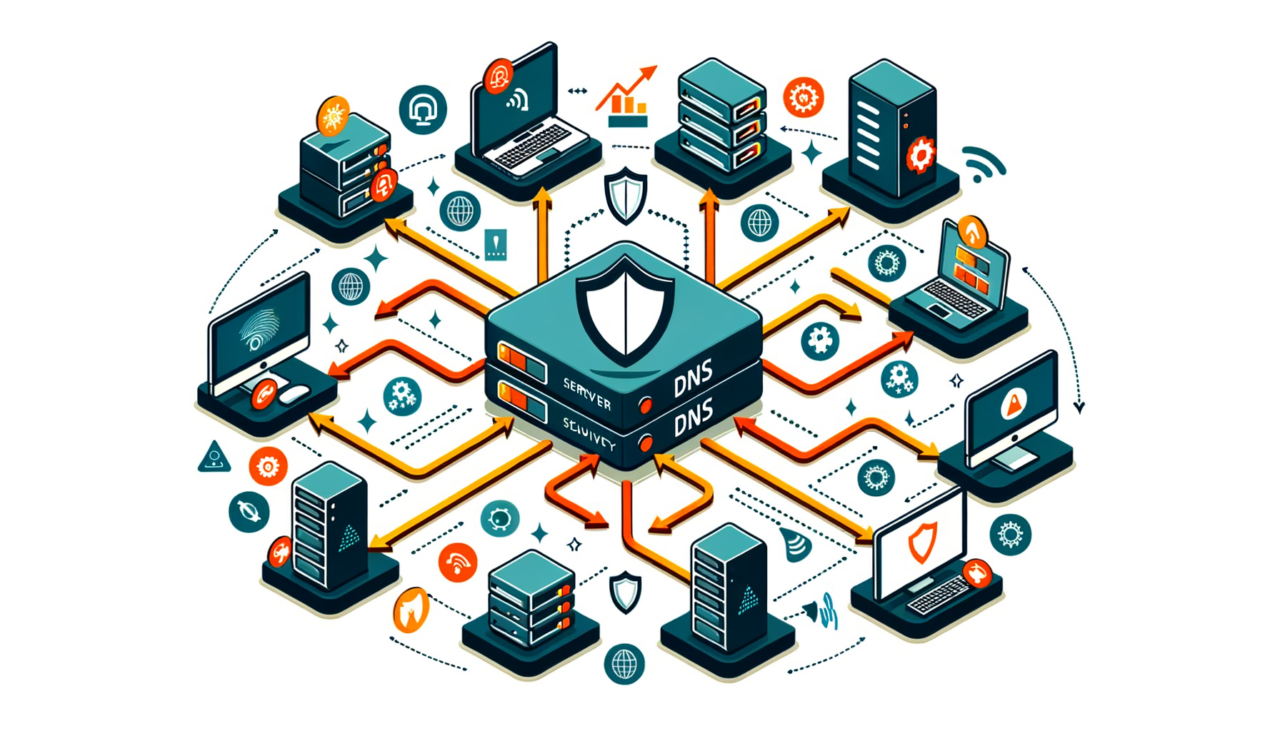Implementing DNS-Based Security Policies: A Bhutanese Journey into the Digital Realm
In the lush valleys of Bhutan, where the sacred peaks touch the heavens and prayer flags flutter in the crisp mountain air, the art of storytelling is a cherished tradition. Much like the timeless tales spun by the elders around a warm fire, the digital world we navigate today weaves its own complex narratives. One such tale is that of DNS-based security policies, a modern guardian for our interconnected world. Join me, Tshering, as we embark on a journey through the intricate weave of DNS, drawing parallels to our Bhutanese heritage to illuminate its significance.
The Prologue: Understanding DNS
Before we delve into security, let us first understand the protagonist of our story—the Domain Name System (DNS). Picture DNS as the wise village elder who knows every villager’s name and can direct visitors to their homes. Just as the elder bridges the gap between names and locations, DNS translates human-friendly domain names into IP addresses that computers understand. This translation is the backbone of our internet experience, allowing us to access information with ease.
The Threat: Dark Clouds Over the Digital Kingdom
In our tale, as in any good story, challenges arise. Imagine our serene Bhutanese village threatened by mischievous spirits—cyber threats that exploit DNS vulnerabilities. These spirits, known as DNS spoofing, cache poisoning, and DDoS attacks, seek to disrupt the harmony of our digital landscape.
- DNS Spoofing: Just as a deceitful spirit might impersonate a villager to mislead others, DNS spoofing tricks users into visiting malicious websites by providing false DNS responses.
- Cache Poisoning: Imagine a spirit sowing confusion by altering the elder’s memory, leading visitors to the wrong homes. Similarly, cache poisoning corrupts DNS cache, redirecting users to harmful destinations.
- DDoS Attacks: Visualize a chaotic festival where the village is overwhelmed with visitors, paralyzing daily life. DDoS attacks flood DNS servers with traffic, causing service disruption.
The Solution: DNS-Based Security Policies
In our quest to restore order, we turn to DNS-based security policies—our digital phurba, wielding precision to banish threats. These policies, like the wise counsel of monks, guide the flow of traffic and uphold the sanctity of our digital village.
Implementing DNS Security: A Step-by-Step Guide
- DNSSEC (Domain Name System Security Extensions): Think of DNSSEC as a protective amulet. It ensures that the elder’s directions (DNS responses) are authentic and untampered. By signing DNS data, DNSSEC prevents spoofing and cache poisoning.
plaintext
; Example DNSSEC Zone File
example.com. IN SOA ns1.example.com. admin.example.com. (
2023101001 ; Serial
7200 ; Refresh
3600 ; Retry
1209600 ; Expire
3600 ) ; Negative Cache TTL
example.com. IN DNSKEY 256 3 8 AwEAAc...
- Response Rate Limiting (RRL): Like a diligent gatekeeper controlling festival crowds, RRL mitigates DDoS attacks by limiting the number of responses to similar requests, preventing server overload.
| Request | Response Limit |
|---|---|
| example.com | 5 requests/minute |
- Access Control Lists (ACLs): Picture a protective wall around the village, only allowing trusted villagers to enter. ACLs define who can query your DNS servers, blocking unauthorized access.
“`shell
acl “trusted” {
192.0.2.0/24; # Trusted subnet
};
options {
allow-query { trusted; };
};
“`
- DNS Filtering: Much like the village elder advising against certain paths, DNS filtering blocks access to harmful sites. This proactive measure curtails exposure to malicious content.
The Epilogue: A Secure Digital Village
As our journey concludes, we find our digital village thriving, protected by the vigilant watch of DNS-based security policies. Like the prayer flags that ward off ill winds, these policies safeguard the integrity and availability of our internet experience.
In embracing the wisdom of both tradition and technology, we ensure that our digital narratives remain untarnished by the shadows of cyber threats. Just as the Bhutanese spirit thrives amidst the mountains, so too can our digital domains flourish with the right safeguards in place.
So, dear reader, as you navigate the vast digital realm, remember the lessons of our tale. Implement DNS-based security policies with the same care and reverence that our ancestors bestowed upon their stories, and you shall find your digital village well-protected and harmonious.
Tashi Delek, and may your digital journeys be ever secure.

Comments (0)
There are no comments here yet, you can be the first!